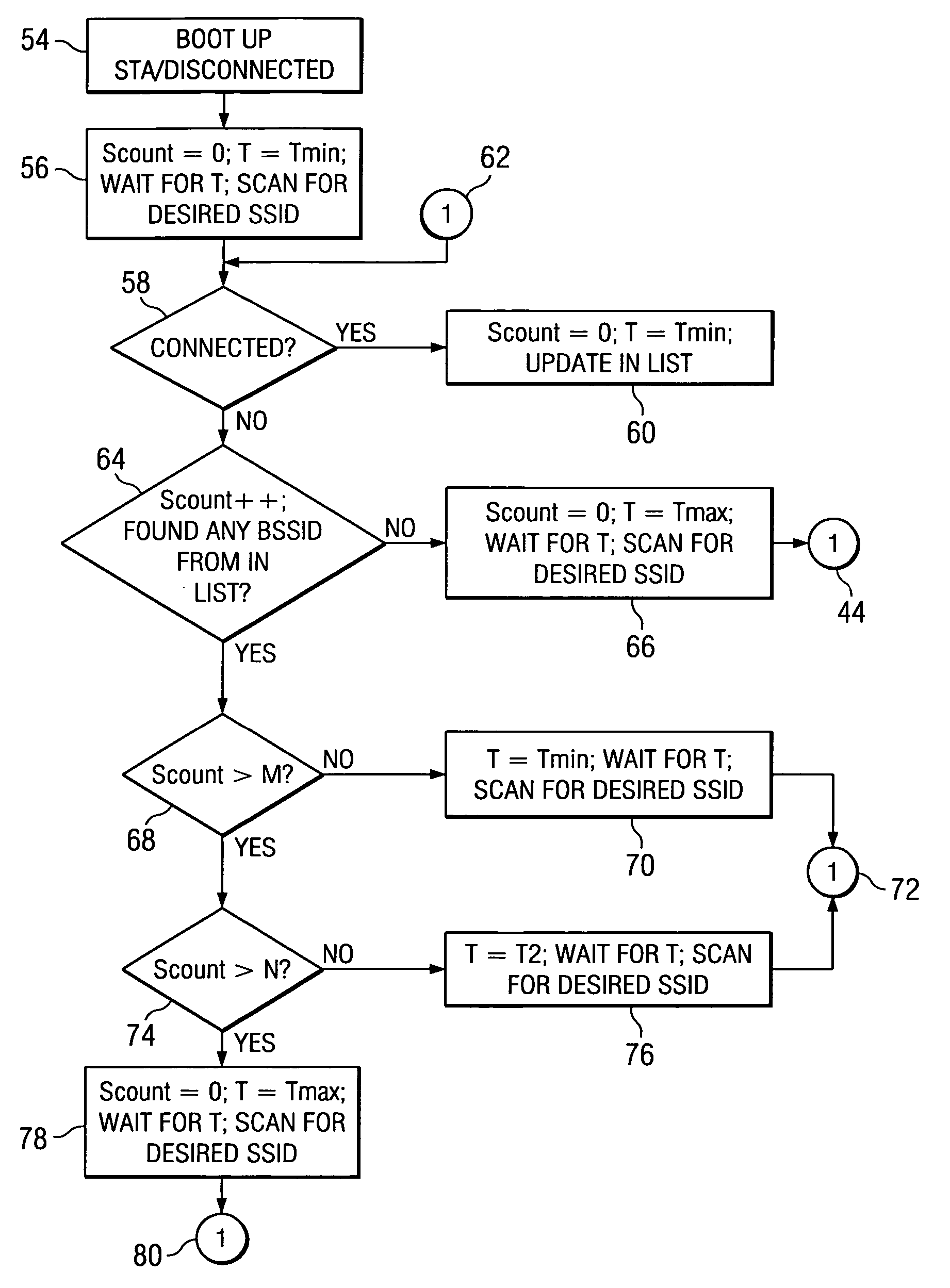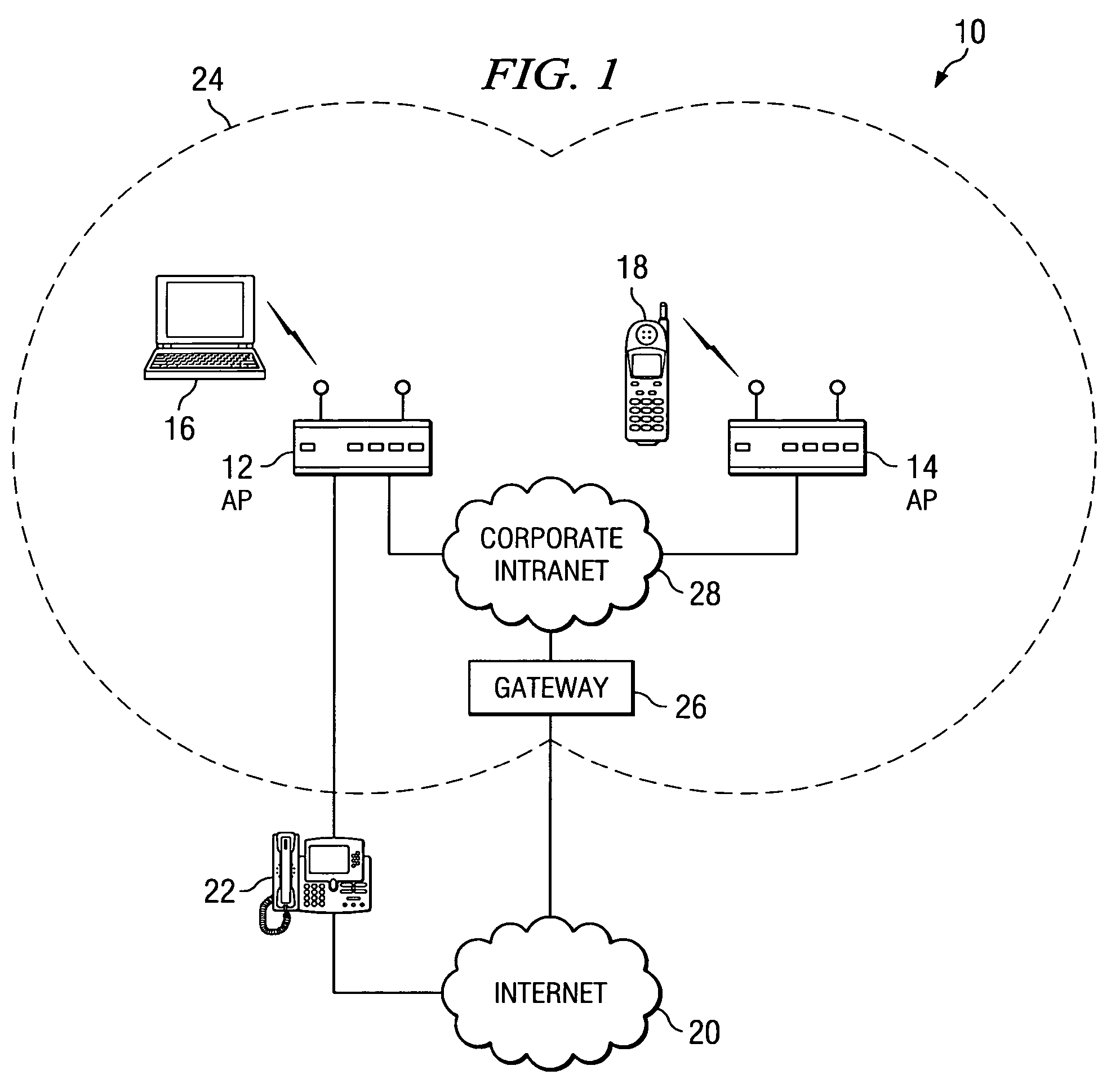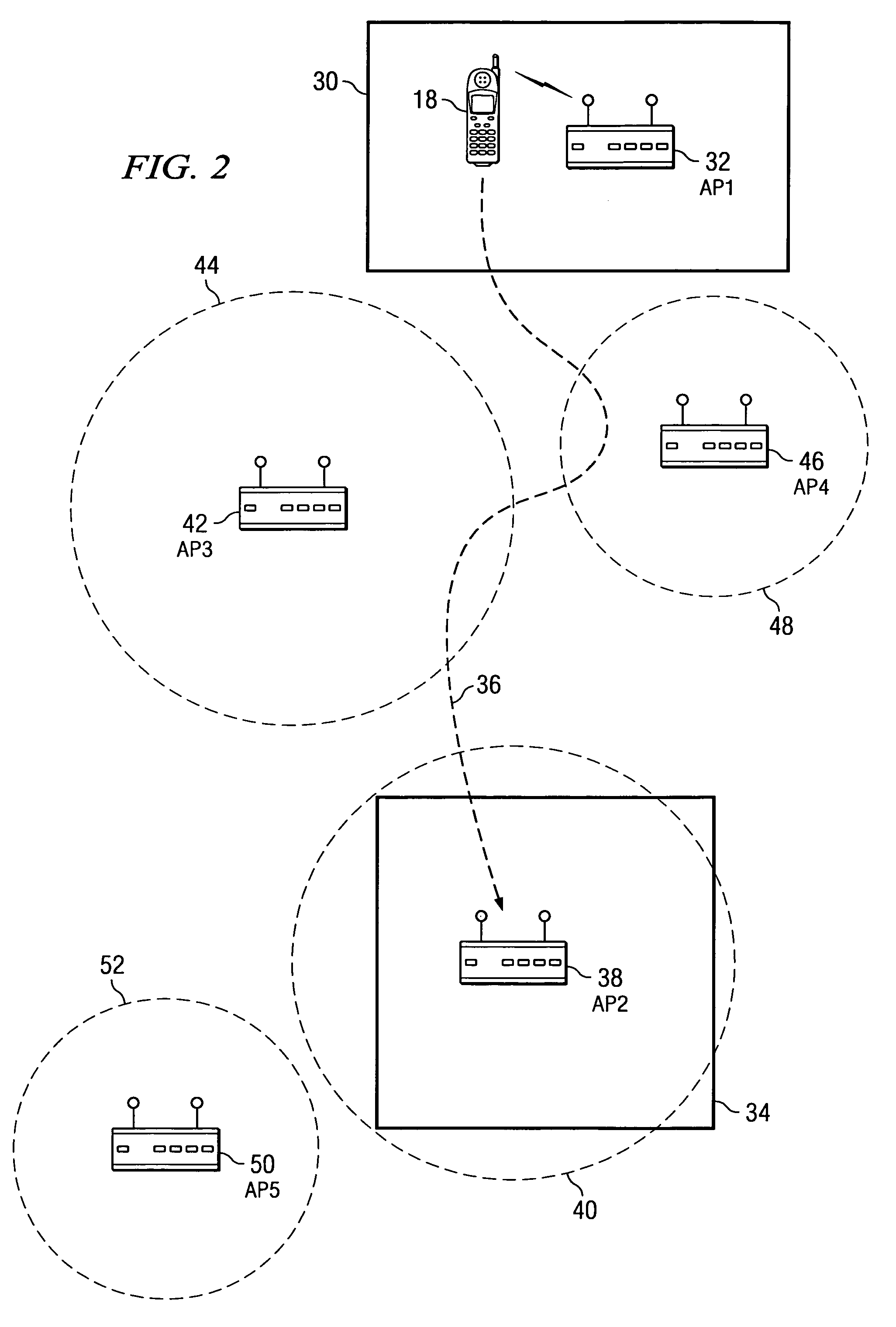Unconnected power save mode for improving battery life of wireless stations in wireless local area networks
a wireless local area network and wireless station technology, applied in the field of power saving techniques, can solve the problems of limited battery life of 802.11 handheld stas, decrease the power consumption of stas, and the standard protocol fails to address the mode of stas, so as to reduce the battery life of out-of-range stas, reduce the “sleep” time, and reduce the number of incoming calls
- Summary
- Abstract
- Description
- Claims
- Application Information
AI Technical Summary
Benefits of technology
Problems solved by technology
Method used
Image
Examples
Embodiment Construction
[0020]The preferred embodiment of the present invention includes a technique to reduce power consumption of an endpoint station (STA) that is in an unconnected state in a wireless local area network (WLAN). FIG. 2 illustrates a diagram where wireless Internet Protocol Phone (WIPP) 18 that is located inside building 30. WIPP 18 is connected to access point AP132 inside building 30 and can make and receive calls through AP1. Line of travel 36 shows the path that a user holding WIPP 18 will traverse in order to move out of building 30 and enter building 34. AP238 is located inside building 34 and is a desired AP with which WIPP 18 can also connect to make and receive calls. AP238 has an approximate radio frequency (RF) propagation area that is represented by coverage ring 40.
[0021]Other APs located nearby the desired AP238 include AP342 having coverage ring 44, AP446 having coverage ring 48, and AP550 having coverage ring 52. Although WIPP 18 can detect Basic Service Set Identifiers (B...
PUM
 Login to View More
Login to View More Abstract
Description
Claims
Application Information
 Login to View More
Login to View More - R&D
- Intellectual Property
- Life Sciences
- Materials
- Tech Scout
- Unparalleled Data Quality
- Higher Quality Content
- 60% Fewer Hallucinations
Browse by: Latest US Patents, China's latest patents, Technical Efficacy Thesaurus, Application Domain, Technology Topic, Popular Technical Reports.
© 2025 PatSnap. All rights reserved.Legal|Privacy policy|Modern Slavery Act Transparency Statement|Sitemap|About US| Contact US: help@patsnap.com



